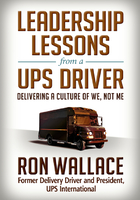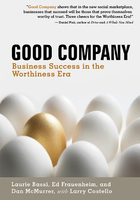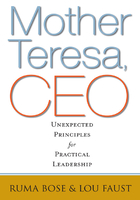What Are Social Laboratories?
The power of solutions lies primarily in the people who believe in and own them.
-V. Srinavas
Current approaches to addressing complex social challenges are not working. There is much to celebrate: the number of people involved in change initiatives, the increasing amounts of money being invested in those initiatives, the steadily declining costs of technology and the attention being given to social innovation. The underlying problems however, from species loss to public debt, continue to grow.
Social fabrics are increasingly strained under loads they were never intended to contain. Inequality is growing. Direct action has either become a strident call for someone else to take action or the frantic alleviation of symptoms that leave underlying causes largely intact. There's increasing pressure on individuals to change their behavior around environmental issues and to take on the burden of austerity measures or cuts in basic services. The sociologist Ulrich Beck describes this situation as an attempt to find "individual solutions to systemic contradictions."[2]
Throw an ashtray in any direction, and you'll hit a messy, complex challenge. It's difficult to escape the persistent feeling that while our problems are already big and bad, they're in fact getting bigger and badder. It's harder and harder to believe people who tell us that things are actually getting better. The future is changing in our lifetimes from a magical place to a place best avoided, a dark place that's becoming difficult to contemplate.
Into this situation comes a very simple premise. We have scientific and technical labs for solving our most difficult scientific and technical challenges. We need social labs to solve our most pressing social challenges. Thomas Homer-Dixon explains:
The public not only needs to understand the importance of experimentation within the public service; it needs to engage in experimentation itself. To the extent that the public explores the solution landscape through its own innovations and safe-fail experiments, it will see constant experimentation as a legitimate and even essential part of living in our new world. To the extent that the public understands the importance of-and itself engages in-experimentation, it will be safer for all of you in the public service to encourage experimentation in your organizations.[3]
Social labs have been quietly brewing for almost twenty years. Hundreds of people around the world have been and are developing social labs. Thousands more have participated in them. There are labs focused on eliminating poverty, on water sustainability, on transforming media, on government, on climate, on social innovation, and on many more issues. A growing number of people are focusing their heads, hearts, and hands on addressing complex social challenges.
The people running these labs represent a new breed-they're not simply scientists or academics, and neither are they activists or entrepreneurs. They're all of these things and a few things we don't have good names for yet. They're making the case for and launching social labs around the world, trying to address some of our most difficult challenges.
Social labs are platforms for addressing complex social challenges that have three core characteristics.
1. They are social. Social labs start by bringing together diverse participants to work in a team that acts collectively. They are ideally drawn from different sectors of society, such as government, civil society, and the business community. The participation of diverse stakeholders beyond consultation, as opposed to teams of experts or technocrats, represents the social nature of social labs.
2. They are experimental. Social labs are not one-off experiences. They're ongoing and sustained efforts. The team doing the work takes an iterative approach to the challenges it wants to address, prototyping interventions and managing a portfolio of promising solutions. This reflects the experimental nature of social labs, as opposed to the project-based nature of many social interventions.
3. They are systemic. The ideas and initiatives developing in social labs, released as prototypes, aspire to be systemic in nature. This means trying to come up with solutions that go beyond dealing with a part of the whole or symptoms and address the root cause of why things are not working in the first place.
These characteristics are not arbitrary. Nor are they convenient. Getting really diverse groups of people to simply step into a room together is hard, let alone trying to get them to act together. Taking an experimental approach requires not only discipline but also a degree of stability and commitment rare in a project-obsessed world. Addressing the root causes of challenges eschews easy and popular political wins in favor of longer time frames and greater uncertainty.
While none of these characteristics is convenient, each is necessary, deeply so. Each characteristic represents hard-won conclusions wrestled at great cost from many thousands upon thousands of hours of trial and error. Each represents countless workshops where many stakeholders shared their most agonizing and difficult challenges. And perhaps more than anything else, together they represent integrity and honesty-they are not what we want solutions to look like, but what we have found they actually look like when effective.
There are, of course, aspiring social labs that do not meet these characteristics any better than programmatic or project-based responses. My contention is that social labs or any intervention aiming to address social challenges that do not have these three characteristics "baked in" will be ineffective or fail.[4] The reasons for this are the nature of complex social challenges, explored in Chapters 1 and 2.
The Sustainable Food Lab was the first social lab I was involved in that embodied these three criteria. Its focus was how to make the global food system more sustainable. The global nature of the challenge meant that participants came from around the world, as well as from different sectors.
The Food Lab initially brought together approximately thirty participants, drawn from corporate food companies, such as Unilever and General Mills; civil society organizations, such as World Wildlife Fund and The Nature Conservancy; and government officials, including representatives from Brazil and the Netherlands.
These participants formed the lab team, who committed to physically working together for approximately twenty days over two years. They were supported by a secretariat, of which I was a part. The role of the secretariat was to design, facilitate, document, and organize the overall lab, building what could be thought of as its container. Over two years, we met together five times: in the Netherlands, Brazil, the United States, Austria, and Costa Rica. Since then, the team has grown and met many times in many other countries.
The lab team started working together by gaining firsthand experience of the system we were trying to change. They traveled as a group to different parts of the food system, such as food distribution centers, big companies, supermarkets, and small and larger farms in several countries. We reflected together on what they had learned. From this reflection came a broad portfolio of initiatives, which were tested and implemented in a process called prototyping. These initiatives ranged from working with small farms in the Global South to trying to shift procurement practices in large corporations, mostly headquartered in the Global North.
WHAT DOES IT MEAN TO BE WINNING?
How successful has the Sustainable Food Lab been?
Director of the Center for Organizational Learning at MIT Peter Senge said, "The Sustainable Food Lab is the largest and most promising systemic change initiative I know of."[5]
The first formal meeting of the lab took place in 2004. What has happened since then? Today sustainability is well entrenched on the radar of global food companies. The Sustainable Food Lab has played a key role in making this happen, having grown to become a platform for innovation in the global food system. From an initial group of twenty-two institutions, today it has almost seventy members.
One business leader reflected on its value, "I am convinced that the world is not capable of feeding nine billion people in the second half of this century, in our grandchildren's world.…We see the system cannot work. What the Sustainable Food Lab is doing has never been done before, this intersection of private and public institutions. This is the greatest hope I have for finding a way through these complex dynamics to a livable world."[6]
So has the Sustainable Food Lab solved the original problem it set out to address? One of its missions was to move sustainability practices from niche to mainstream. This shift has clearly been achieved-the global food system is more sustainable today than when the lab was conceived and launched, and it can claim no small credit for this.
Many more decision makers are aware of the challenges they face and many more organizations are engaged in actively addressing these challenges. Prior to the lab it was clear that lots of individuals in the mainstream food system were concerned about broader sustainability issues, but most were not. Corporate attitudes were either defensive or, at best, focused on minimal compliance, as opposed to seeing sustainability as a competitive advantage or as being part of their broader civic role.[7] A key example of this shift is Unilever's sustainability policies, which were heavily influenced by their long-standing participation in the lab. In 2012 Unilever announced, "it would endeavor to decouple growth from its environmental impact. By 2020, Unilever aims to halve the environmental footprint of its products and to improve the lives of a substantial number of smallholder farmers."[8]
The Food Lab, and other social labs, generate at minimum four sets of outputs: physical capital (new services or infrastructure), human capital (new capacities and skills), social capital (increased trust and collaboration), and finally, intellectual capital (new knowledge and learning). As we will see in the cases that follow, these outputs contribute directly to preventing the collapse of key systems.
The success of any lab-scientific, technical, or social-must be measured through multiple indicators, as opposed to relying on a binary logic of did it work or not. Particularly when concerned with either basic science or long-term challenges, such as cures for cancer, for example, progress is sometimes hard to measure in the short term. It may be premature to ask a medical technician, "How many people have you cured this quarter?" But just because the answer to this question might be "none," this does not indicate progress is not being made. Over time, however, progress is much easier to see, and results can be more clearly articulated.
The contrast between how we approach scientific and technical challenges and how we treat social challenges is stark. Whereas the natural sciences have moved on from a Newtonian worldview, it sometimes feels in the social spheres that we are still trapped in mechanical, linear ways of thinking. Instead of supporting talented and committed teams to seek permanent solutions to our most serious challenges as we do in the sciences or in the technology sector, we fund tightly controlled five-year plans. This leaves little space for learning, innovation, and change.
Teams that create real and lasting change on the ground are rarely invested in or funded. When it comes to social challenges, plans are what get funded. The teams responsible for both the formulation and implementation of plans come as afterthoughts, if at all. The nature of plans requires that we predict the future, telling funders and sponsors in advance what we will produce every quarter, sometimes for years on end.
Imagine a company like Google, at inception, being asked to package its work into a five-year plan. Imagine an investor telling Larry Page that he has to tell them what inputs he needs every quarter and what outputs he will produce every quarter. And if there is a difference between his predictions and reality, his funding will be at risk. And while he's at it, overheads must be kept below 20 percent. Further imagine that the investor doesn't really care about where the talent will come from. Clearly such a scenario is absurd. Google is famous for its anti-planning stance.[9] Yet imposing this neo-Soviet model is the norm when it comes to addressing complex social challenges. We have to ask ourselves not only what does it mean to be winning or losing in the social sphere but what does it actually mean to play?
PLAYING IN THE WORLD CUP
Nothing in this world is difficult, but thinking makes it seem so. Where there is true will, there is always a way.
-Wu Cheng'en
Everywhere I go, I meet people who want to change things. They want to change the education system or address issues such as climate change or eliminate extreme poverty. Sometimes these people are young, and sometimes they are experienced. Sometimes these people are activists or entrepreneurs; sometimes they are government employees or elected officials; sometimes they work in business as chief executives or corporate responsibility professionals. Sometimes they are resource rich, and sometimes they are not.
The first thing that usually strikes me about these encounters is the nobility of the intention. People really care fiercely about each other. By and large they want to help each other and do something about the suffering, unfairness, or injustice in the situations we are all confronted with. More and more people are taking up the hard work of changing such situations. A belief that we can change things is spreading. I feel hopeful.
The second thing that strikes me is the lack of realism that all too often accompanies such intentions and desires. I often hear from people who do not seem to entirely grasp the nature of the challenges they seek to address. Many people are working as individuals, even as they work within massive institutions, on problems that affect many thousands, or even millions, of people. Then when I talk to well-intentioned and resource-rich organizations, they do not seem to be very effective. Reports recommending action seem to be drowning out action. It's as if we believe that writing a report is 90 percent of the work. Finally, I feel there is too much contentment with whatever is being done, regardless of impact. I start feeling less hopeful.
People approach my colleagues and me to help them with problems that are on par with winning the World Cup: eliminating child malnutrition, addressing climate change, or making the global financial system more sustainable, and so on.
A typical conversation goes something like this:
Person: I want to house the homeless (or address poverty or any one of a dozen honorable intentions…)
Me: That's great. How do you want to do that?
Person: Well, I'm very passionate about it, but I'm not sure…
Me: Ok, well to start, what kind of resources are investing in this venture?
Person: I plan on working on it one day a week and would
like your help running a two-day workshop.
You might think this is a crazy conversation, but it happens in various forms all the time, albeit usually couched in slightly more sophisticated language. And I struggle. How do I respectfully break the news that an individual working one day a week is highly unlikely to address poverty in Africa? For starters, you need a team. Would someone think it was possible to train for the World Cup only one day a week?
What about those institutions that have overcome the challenges of time and resources? What about all the multibillion-dollar initiatives with hundreds of employees? What about a resource-rich organization like the World Bank with its mission "Working for a World Free of Poverty"? What about governments?
Well, as anyone who has watched any competition knows, there are winners and losers. And the correlation between wealth and winning is not always clear cut. All too often we believe that the solution is simply a matter of money or resources. This isn't true for sports and it isn't true for complex social issues.
Brazil, to take one example, has won the World Cup five times, while simultaneously having a low GDP and being one of the most unequal societies in the world. Michael Lewis, in his bestselling book, Moneyball, tells the story of the Oakland Athletics, where he explores the question, "How did one of the poorest teams in baseball, the Oakland Athletics, win so many games?"[10] There are also countless examples of teams spending millions of dollars and getting nowhere. As Michael Lewis points out, "It still matters less how much money you have than how well you spend it." Money is certainly a factor, but the challenge clearly goes beyond material resources.
The most important question about winning the World Cup, or achieving any big goal, is to ask how badly do I want this? And critically, how badly do we want this? If we don't want it badly enough, if we're unsure, then it's highly unlikely we will be willing to go through the pain, make the sacrifices, and build the skills required to win a World Cup. Everything flows from this commitment to play.
I remember seeing a documentary about Usain Bolt, the fastest man in the world. At one point during training, he staggered off the track and spent a few minutes throwing up. He scowled up at the camera and said, "I hate training." Hubert Dreyfus, a sociologist who has studied how we acquire skills, comments, "To become competent you must feel bad."[11]
THE SCALE-FREE LABORATORY
I don't want to scale things up, I want to get them right.
-Derek Miller, The Policy Lab
All this talk of World Cups implies that social labs can be applied only to big challenges, like the sustainability of the global food system. Interestingly, scale is one of the issues that most preoccupies actors working in the social realm. The usual assumption is that we start small and then grow big. Common questions, particularly in donor communities, include "How will your initiative scale up?" and "What is your scaling strategy?" These concerns are, however, largely irrelevant.
Just as a game of football can be played almost anywhere with very little equipment or can be played with professional teams in vast stadiums, social labs can be run at any scale. This could range from a school or an organization to a community, a city, a country, a region, or the world. A good example of this comes from South Africa.
In mid-2007, my colleagues Marianne Knuth and Mille Bojer helped launch a South African initiative called Kago Ya Bana (KYB), which means "Building Together for Our Children." The work was located in Midvaal Municipality, located midway between Johannesburg and Pretoria with a population of just under one hundred thousand people. It focused on the challenges faced by children and families suffering from HIV and AIDS. KYB represents a successful lab undertaken at community level.
One of the participants reflected on what she had learned working on KYB: "Since KYB, I feel hopeful because every stakeholder is taking responsibility and there is shared ownership of the problem. Every part of the child feels represented-from nutrition, to access documentation and involving parents. We are tackling the problem at all levels and it feels like, wow, we are a village raising a child."[12]
The decision of scale is, in many ways, the first decision that needs to be made about what sort of social lab to run. People who want to play football have a decision to make: are they going to play informally and kick a ball around with their friends, play in a local league, or strive to play professionally? The same decision needs to be made around a lab. What level of challenge are we up for? And there is no wrong answer.
Instead of seeing social interventions as always needing to take scaling up into account, the social realm is scale-free by nature.[13] A social lab can be designed to operate at any scale, depending on the intentions of the people in it. It will grow in whatever direction and way is needed and doesn't necessarily require central planning.
There is one caveat in creating purely local labs. When we start examining purely local challenges, we discover that the source of our problems lies far outside the boundaries of our communities-be that the death of manufacturing or adverse environmental effects brought about by climate change. In other words, while a social lab can be run at any scale, we soon discover that we're not cleanly separate from the big, bad world.
If successful, a social lab will produce direct results addressing the challenge at the scale it's designed for, be that a community or a country. Labs can also, however, produce results beyond the scale they're designed to work in. This happens when inspiring innovation and disciplined use of the intellectual capital-inevitable parts of a lab-build capacity in people who go on to do other things.
Once we're clear that we really do want to try to win a World Cup (or eradicate unemployment in our community, or address climate change, etc.), we're faced with the question of how best to proceed, of how to play. It's not simply that we lack resources, time, or people willing to tackle our most complex social challenges. Rather, we lack a theory of action; we need some way of guiding our actions, a practical theory. How do we deploy our talents, our time, our money, and our resources as a society? Where do we find the will to tackle complex challenges?
The practice of social labs aspires to answer these questions. This practice offers anyone interested in addressing complex social challenges an option. In contrast to this option, however, is the dominant planning-based response. It's into this dominant response that most attention, energy, and resources go. If we understand complex social challenges better, then we'll see that such investments are nothing short of disastrous-hence the dire need for a different approach.
A CASCADE OF SOCIAL LABS
The prize for solving the problems we now face will be to have more interesting problems to solve in the future.
-Alex Steffan
A social lab is not, of course, a silver bullet that solves our most complex social problems. Social labs represent a new direction, different from business-as-usual (BAU) responses. They represent a pragmatic attempt to act in the face of increasingly complex situations in a way that increases the odds of addressing situations systemically at their roots.
Perhaps one of the most exciting developments in the last few years is the birth of many new social labs. While each on its own is exciting enough, an ecology of labs together promises a revolution in how we address complex social challenges. Some of these labs are what could be thought of as social labs, while others represent a democratization of scientific and technological labs. The possibilities generated by these labs working together are endless. Given enough social labs, we will see vibrant ecologies sprouting up to support them. The wonder of it is that this is what's actually happening.
There has been an explosion in the number of labs focused on addressing complex social challenges. SociaLab, based in Chile, focuses on new enterprises to alleviate poverty. Some of these labs, such as the Abdul Latif Jameel Poverty Action Lab (J-PAL) at MIT, are formally labs in the sense of being housed in a university and staffed by academic practitioners.[14] Others are not formally known as labs, but, for all intents and purposes, are because of their practices. For instance, my friend Bob Stilger has helped create Resilient Japan, which is focused on community responses to the 2011 earthquake and tsunami.[15]
Labs are also springing up as a way for organizations to learn with their partners, such as Greenpeace's Mobilisation Lab, or MobLab, which is "designed to capitalize on Greenpeace's fearless embrace of the experimental…[and] provides the global organization and its allies a dynamic, forward-looking space to envision, test, and roll out creative new means of inspiring larger networks of leaders and people around the world to break through and win on threats to people and the planet."
At Reos, my colleagues and I have been busy with several labs, including ones on climate change, community resilience, and state collapse.
With support from us, the Rocky Mountain Institute runs the eLab, which is "a state-of-the-art forum to accelerate the transformation of the U.S. electricity system."[16] Another example is the Open Contracting Initiative. Along with the World Bank and numerous other stakeholders we are working toward transparency in government contracting.[17]
In addition to social labs, there has been an exponential increase in a number of maker or fab labs. These labs deploy technologies such as 3-D printing in order to democratize the manufacture of just about anything imaginable. A movement springing from MIT's Centre of Bits and Atoms, Fab Labs, has open-sourced its technology, and now we are seeing labs popping up from Afghanistan to California.[18] The potential of social labs increases when coupled with this new generation of tech labs.
Considering the development of an entire ecology of social labs and having uncovered the theoretical and practical gaps in first-generation social labs leads us to an exciting question: what would we have if we built on first-generation social labs, theoretically and practically, making the improvements we know we need to make? We would have a battle-tested, mature approach. We would have a theory of systemic action to help guide us in addressing complex social challenges. We would have a revolution in how we address humanity's most pressing challenges.














